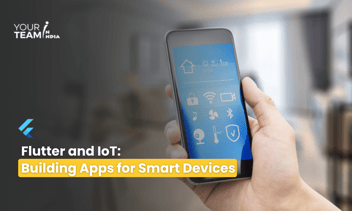Quick Summary: In the world of Flutter, providers play a pivotal role in managing state and data throughout your application. This article delves into the intricate concept of providers, shedding light on their significance and how they empower developers to create dynamic and responsive mobile apps. Join us on a journey to unlock the power of Flutter providers.
Introduction
In Flutter, a "provider" refers to a design pattern and a package that helps manage state in your application. It's commonly used to efficiently share and update data between different parts of your app, such as widgets, without the need for prop drilling (passing data through multiple widget layers).
The "provider" package in Flutter provides a way to manage and consume data using a provider class, which acts as a source of truth for your app's state.
Let's go through the concept of providers step by step with an example:
Step 1: Setting up the Project
Assuming you have Flutter and Dart installed, start by creating a new Flutter project:
|
flutter create provider_example |
Open the pubspec.yaml file of your project and add the following dependency under the dependencies section:
|
dependencies: |
Then, run flutter pub get to install the package.
Step 2: Creating a Data Model
Create a file named user.dart inside the lib folder of your project. This file will define a simple User data model:
|
class User { |
Step 3: Creating a Provider
Create a file named user_provider.dart inside the lib folder. This file will define a provider class using the ChangeNotifier class from the provider package:
|
import 'package:flutter/material.dart'; |
Step 4: Using the Provider in Widgets
Create a file named main.dart inside the lib folder. This file will demonstrate how to use the UserProvider in your app:
|
import 'package:flutter/material.dart'; |
Step 5: Running the App
Run the app using flutter run in your terminal. You should see the app with the "Name" and "Age" fields displayed as "N/A" initially. When you click the "Update User" button, the user's data should update accordingly.
In this example, we've created a simple user data model and a UserProvider class that extends ChangeNotifier. We've then used the ChangeNotifierProvider widget to provide the UserProvider instance to the widget tree. Finally, we've consumed the provided data using the Provider.of method in the HomeScreen widget.
Remember that this is just a basic example. In real-world applications, you can use providers to manage more complex state and data throughout your app.
Ready to take your Flutter development to the next level? Dive deep into the world of providers and supercharge your app's state management! Hire Flutter Developers and get started today!








